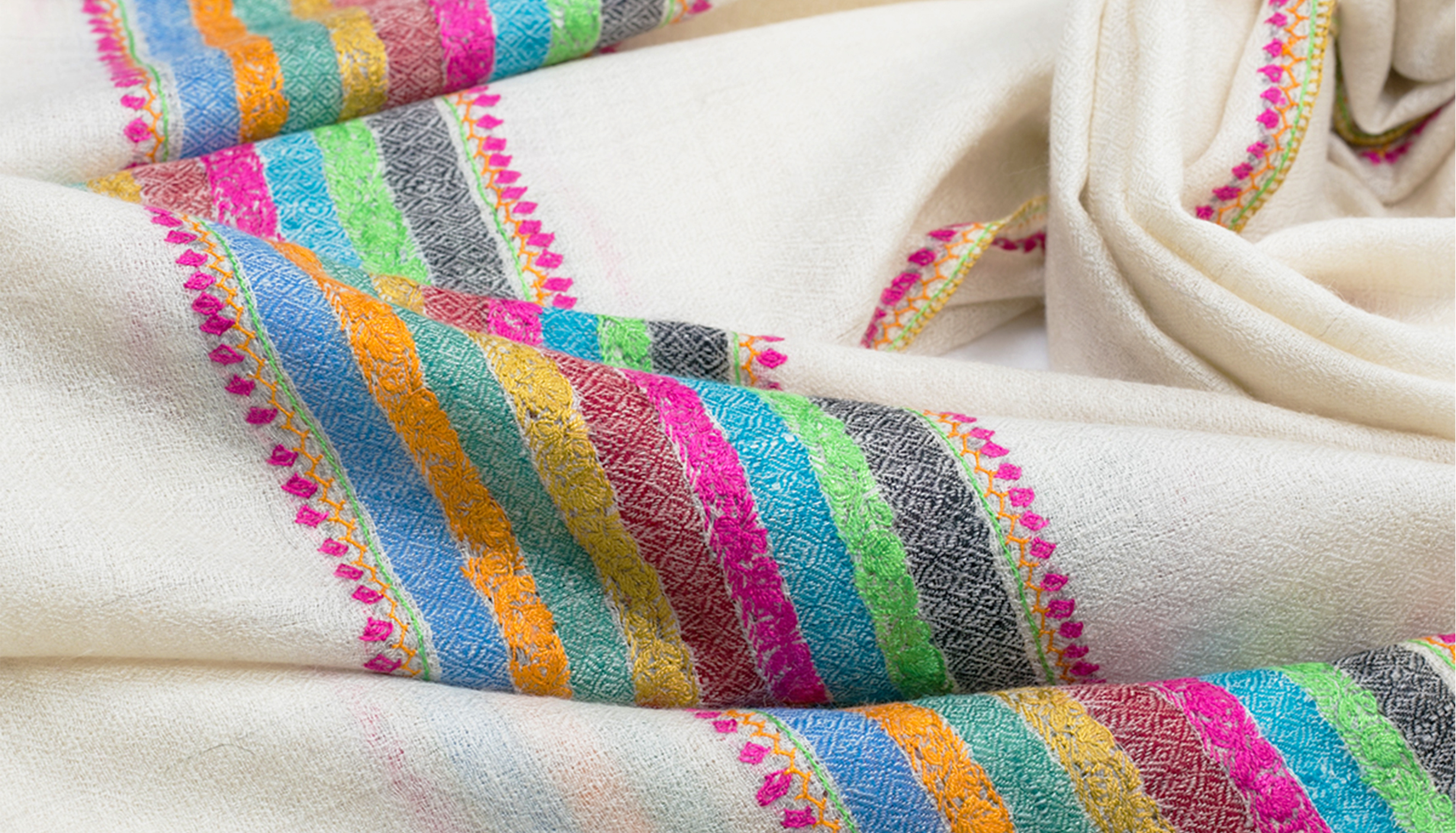
For years, it has been a common doubt is there any difference between Pashmina and Cashmere. As owing the Pashmina is an expensive affair, the customer gets a proper resolution before they make any investment. While searching online, you may come up with different ideologies. As the material itself is so ancient that many folklores have blended with the fact. From colloquial language to literature, we get to know about this regal woolen accessory.
To know whether there is any difference between cashmere and Pashmina, you have to look back in history. A timeline of the fabric will remove all the confusion and will give you an idea about the chronology.
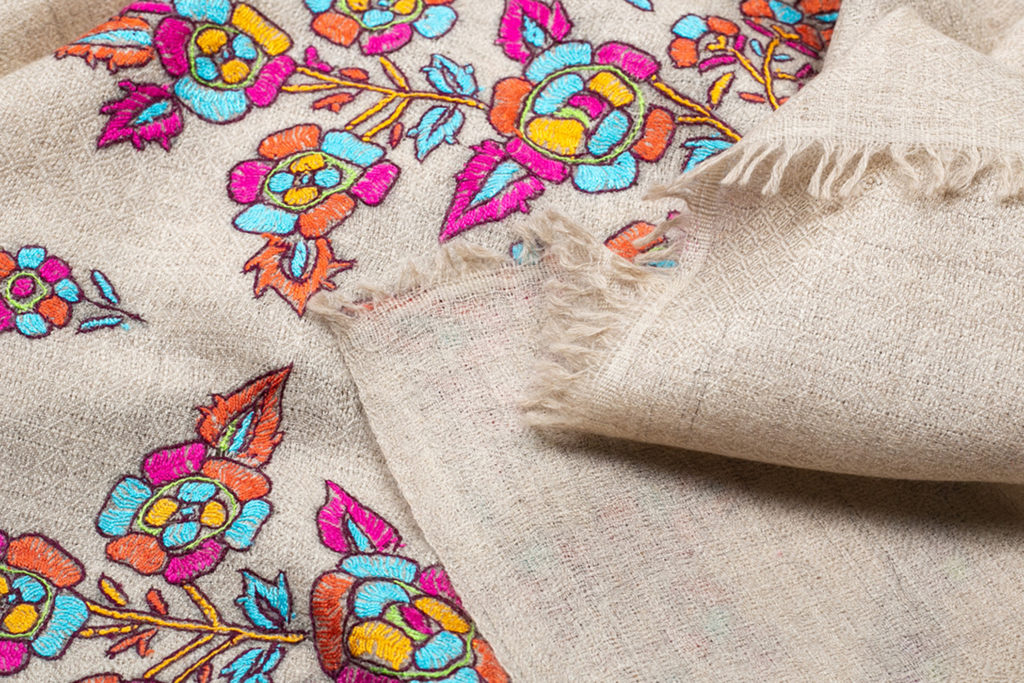
How it was started?
Since the Indus Valley civilization of Mahenjo-Daro, woolen shawls are the representation of royalty. You can get the depiction of woolen shawls made in Kashmir in Afghan texts of 3rd century BC. The Kashmir woolen industry was build by 15th century ruler Zayn-ul-Abidin after he brought Persian weavers there. Even the word Pashmina came from the Persian word Pashm that means wool.
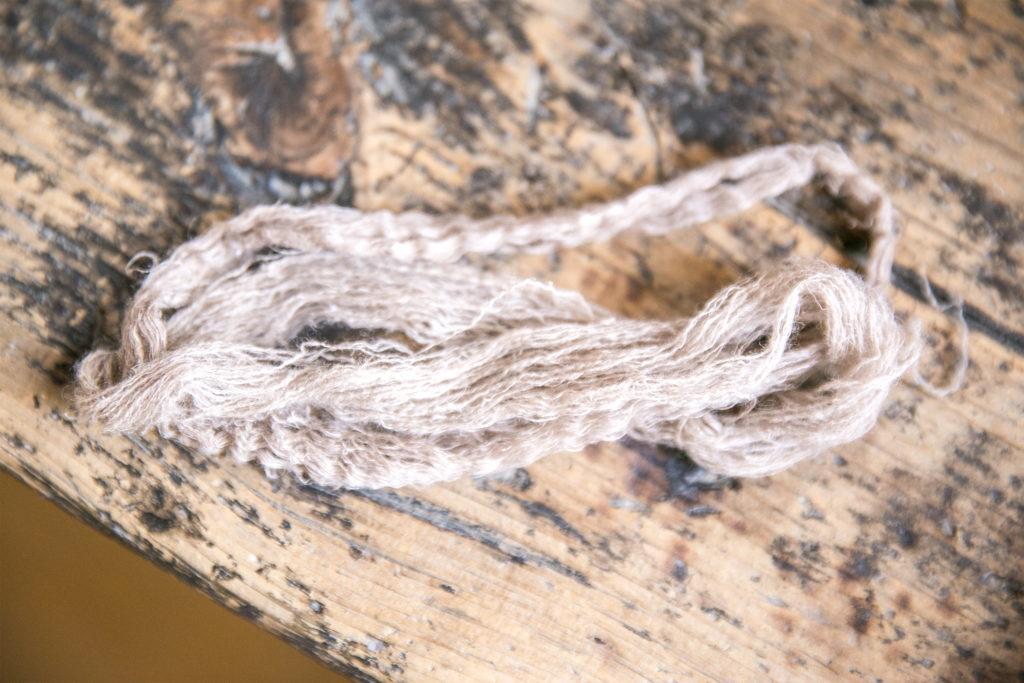
The unique factor of this woolen industry is that instead of sheep wool, the craftsmen collect the fiber from goats found in the Himalayan valley. As the European first experienced this material in Kashmir, they coined the word Cashmere from there only.
So, we can say that Cashmere is something that the Western world can recognize where Pashmina is the local term for the same material.
Is there actually any difference between Cashmere and Pashmina?
Although most of the time, we use the words Cashmere and Pashmina in a synonymous sense, there is a subtle difference between these two. For that, we have to know how the wool is obtained for the Cashmere Shawls so that we can have a clear picture of this.
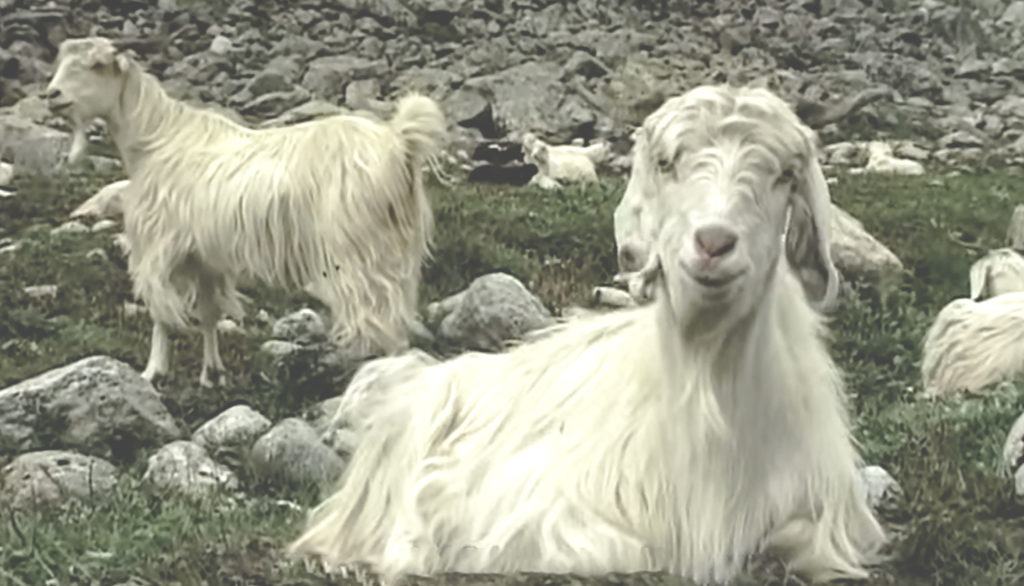
Unlike other wools that collect from sheep, Cashmere is made of the hair of goats. There are different breeds of Himalayan goats like the Malra breed of Kargil region (India), Changthangi goat of the Changthang plateau of the Ladakh region (India), Chegu goat of Himachal Pradesh (India), and Chyangara from Nepal. Along with these, there are the subspecies of the goat in Tibet, China, and Magnolia. All of these goats are found more than 4000 meters above sea level.
Also Read: Himalayan Shawls – Everything You Should Know About This
The wools are harvested from these goats during the spring when these animals shed their soft undercoat. These hairs are collected, separated, cleaned, combed, and spun to prepare them for final use.
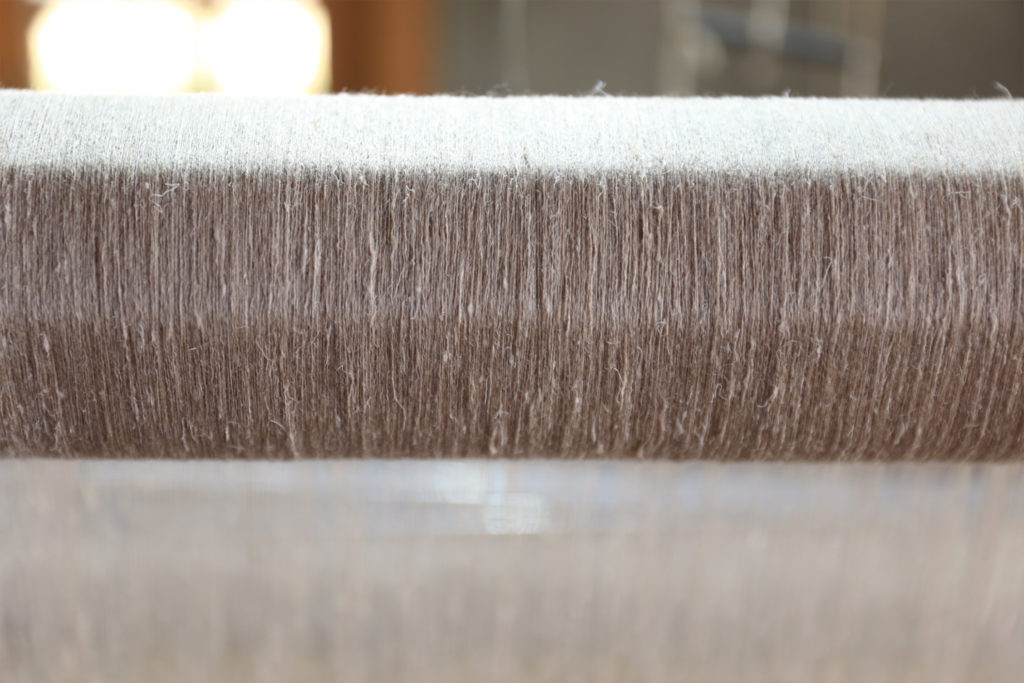
Pashmina vs Cashmere – Main Difference
Both cashmere and pashmina are high-end textiles prized for their cosiness and softness. Their places of origin and methods of manufacturing are where the greatest differences reside. While pashmina is made from the undercoat of Himalayan mountain goats cashmere is made from the delicate hair of Cashmere goats. Although pashmina is a kind of cashmere it is more frequently related to premium fibres from the Himalayan region. Both fabrics are highly regarded for their great quality and are frequently used to produce expensive scarves, shawls, and apparel items.
It is the subspecies of the goat that make the main difference between the Cashmere and Pashmina. Cashmere shawls are those that are made of the wools of the Himalayan goats but Pashmina is exclusively made from a specific breed of mountain goat called Capra Hircus. So, we can say that Pashmina is a variety of Cashmere.
Another difference, between these two materials, is the diameter of the fabric. Pashmina fiber is thinner that is 10-15 microns and the basic Cashmere fabric has 15-19 microns diameter. Due to the thin texture of the Pashmina, it is necessary to hand-spun the wool and manually weave them to make beautiful shawls, scarves, throws, and wraps with utmost care. On the other hand, Cashmere is easier to spin.
If you closely compare these two types of wool, then you can find that Pashmina is softer compared to Cashmere. However, only the experienced and experts in this field can make the differentiation.
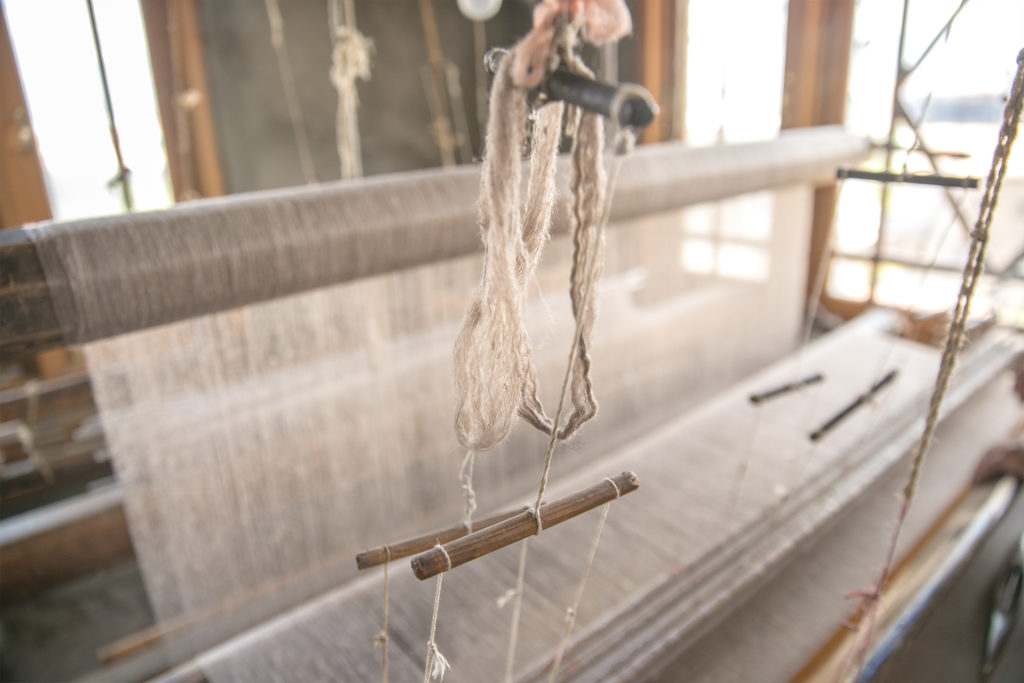
Which One Is More Expensive – Cashmere or Pashmina?
If you check in the market, you will find Pashmina is more expensive than Cashmere.
We will discuss the reasons here.
To know the difference between these two luxurious fabrics; we need to start from the very beginning. Pashmina is a type of Cashmere that comes from one particular type of goat while Cashmere wool is collected from different types of goats that reside in the Himalayan region.
In Ladakh valley, there is only one particular type of Changthangi goat from where the Pashmina wool has been curated. On the other hand, the Cashmere goats can be found in Mongolia, New Zealand, and different other Himalayan religions.
If you check the quality of these two materials; then you will find that Pashmina is much softer, and warmer than Cashmere. It is true that cashmere is also very soft and warm and it is more durable than Pashmina, but the latter is more comfortable to wear. For that reason, Pashmina is more expensive than Cashmere.
Here are some more detailed descriptions of Pashmina and Cashmere; so that you can have a clear idea why Pashmina is more expensive than Cashmere.
- Pashmina shawls and scarves are spun by hand as per the traditional trend. The artisans of Kashmir still follow the years-old technique to spin the wool and weave by hands only. On the contrary, Cashmere is machine spun.
- The authentic Pashmina wool has a diameter of 10-15 microns whereas cashmere wool is 15-18 microns. For that reason, Pashmina is softer than cashmere.
- Pashmina fabric is used for shawls, scarves, and blankets but cashmere is mostly used to make the garments.
Key Points: Pashmina vs Cashmere
| Aspect | Pashmina | Cashmere |
|---|---|---|
| Source | Derived from the undercoat of Changthangi goats in the Himalayas, primarily found in Nepal and Kashmir region. | Obtained from the soft undercoat of Cashmere goats, mainly found in regions like Mongolia, China, Iran, and Afghanistan. |
| Fiber Diameter | Generally finer and thinner fibers, typically around 10-15 microns. | Slightly thicker fibers, averaging around 15-18 microns. |
| Softness | Renowned for its exceptional softness and luxurious feel. | Also soft and luxurious, but slightly less fine than Pashmina. |
| Warmth | Exceptionally warm due to the fine fibers, providing excellent insulation. | Offers great warmth and insulation, making it suitable for cold climates. |
| Rarity | Relatively rarer due to the limited availability of Changthangi goats and specific region of origin. | More common due to the wider distribution of Cashmere goats. |
| Production | Hand-processed and traditionally woven, often resulting in high-quality artisanal products. | Processed both by hand and machine, allowing for a range of qualities and price points. |
| Cost | Generally more expensive due to its rarity and intricate production process. | Can vary in price depending on the quality and origin, but often less expensive than Pashmina. |
| Blending | Can be blended with other fibers, like silk, to enhance durability and texture. | Also frequently blended with other materials to enhance properties like durability and affordability. |
| Uses | Primarily used in luxury scarves, shawls, and high-end garments. | Widely used in sweaters, scarves, gloves, and various other clothing items. |
| Maintenance | Requires delicate care, such as gentle handwashing and storage to maintain quality. | Requires careful washing and storage to prevent damage and maintain softness. |
100% pashmina
100% pashmina signifies an authentic luxury fabric woven from the fine wool of Himalayan goats, renowned for its softness, warmth, and elegance. The highest grade Chyangra Pashmina, is handcrafted by carefully spinning and weaving it using traditional looms. It comes from the soft fur of Chyangra mountain goats, and it’s super luxurious and high-quality.
Bottom Line:
We can say that Pashmina is the finer version of Cashmere. No matter, you have a Pashmina or Cashmere shawl; it is your duty to keep the product safe as both of them have some exceptional qualities for which these are considered among the most luxurious fabrics of this world. You have to follow some basic guidelines for its care to enjoy this exclusive woolen material years and years.
FAQ: Pashmina vs Cashmere
Is pashmina the same as cashmere?
Pashmina is a type of cashmere, but there is a slight difference between the two. Cashmere refers to the soft wool that comes from Cashmere goats, whereas pashmina specifically refers to the finest and softest fibers sourced from the undercoat of Himalayan mountain goats.
What is the source of cashmere and pashmina?
Cashmere is sourced from the fine hair of Cashmere goats, which are primarily found in regions like Mongolia, China, Iran, and Afghanistan. Pashmina, on the other hand, comes from the undercoat of Himalayan mountain goats, especially from the Changthangi breed in the Kashmir region.
Which is warmer, cashmere or pashmina?
Both cashmere and pashmina are known for their excellent warmth and insulation properties. Since pashmina is a type of cashmere known for its superior softness and warmth, it is generally considered slightly warmer than regular cashmere.
Are cashmere and pashmina sustainable materials?
The sustainability of cashmere and pashmina production depends on ethical practices and responsible sourcing. Overgrazing and improper herd management can lead to environmental concerns. However, many manufacturers are adopting sustainable practices to ensure the long-term viability of these luxury fibers.
Can you feel the difference between cashmere and pashmina?
Yes, there is a discernible difference in texture between cashmere and pashmina. Pashmina is prized for being exceptionally soft, lightweight, and delicate, while cashmere, in general, is also soft but may have slightly varied textures depending on the source and processing.